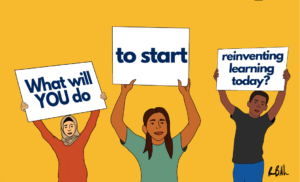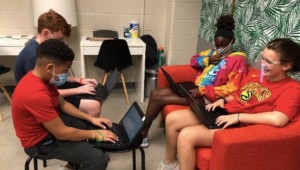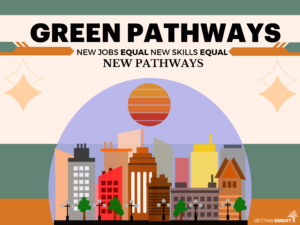Rhee-form or Reinvention?
James Dyson hated vacuum cleaners that didn’t suck. Rather than modifying the traditional bag vacuum, he ripped off the bag and built a cyclone that attached to the vacuum. More 5,000 prototypes attempts later, he had the best vacuum cleaner in the world.
I’m old enough to remember when there were vacuum cleaner repair shops. We don’t fix old appliances any more, we buy new ones because the new ones are better and cheaper and have a whole bunch of new features. Sometimes innovation beats repair.
Michelle Rhee wants to fix US education. Digital Learning Now wants to reinvent it. The 10 recommendations in Digital Learning Now are aligned with Rhee’s agenda but make the case for the expanded opportunity of innovation.
She wants to fire bad teachers and make schools work better. Digital Learning Now wants anywhere anytime learning.
She wants more charter schools. Digital Learning Now wants public funding to follow kids to the best learning option.
She wants to bust bureaucracy. Digital Learning Now wants funding that promotes achievement, completion and innovation.
Fix or replace? The answer is both. The US is rapidly falling behind the rest of the industrial world. We need to work inside and outside the system. We need rapid reform and reinvention.
The Rhee-form agenda is important—better evaluation, more charters, less bureaucracy—but it focuses on cleaning up a system that can’t do what we need it to do. The American education system—based on age-cohorts sitting in rows studying print for 180 days—is obsolete. We need schools that work better for students and teachers—schools that engage students and extend and accelerate learning.
It’s clear that we need a new employment bargain in education. But let’s compare two approaches—buy it or build it. As illustrated in Denver and DC, it may cost billions to buy our way in to a new employment bargain in urban education. It will be faster and cheaper to build new options with differentiated (i.e., different levels) and distributed (i.e., different locations) staffing and a new front loaded performance-based compensation strategy. Create options—let families decide. Close struggling schools—replace them with efficient blends of online and onsite learning.
The ‘fix’ will help but won’t create the education system American needs. We need Digital Learning Now.








0 Comments
Leave a Comment
Your email address will not be published. All fields are required.